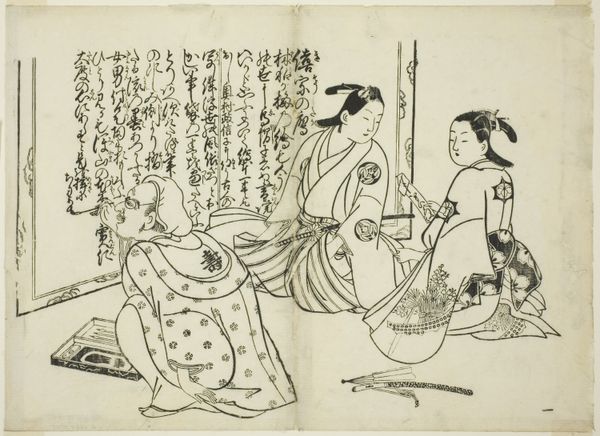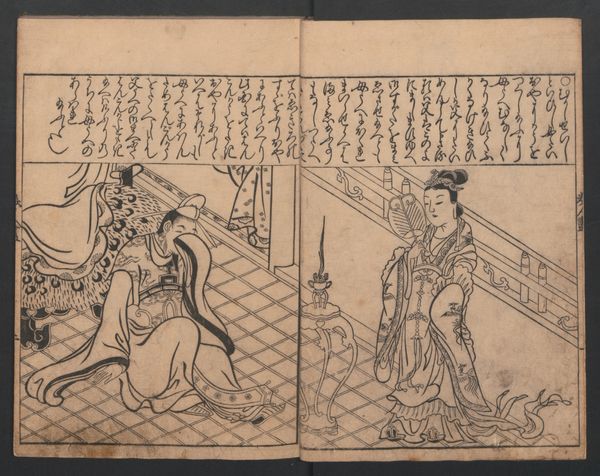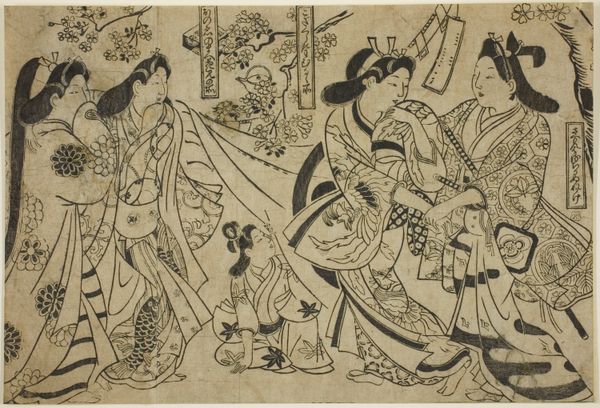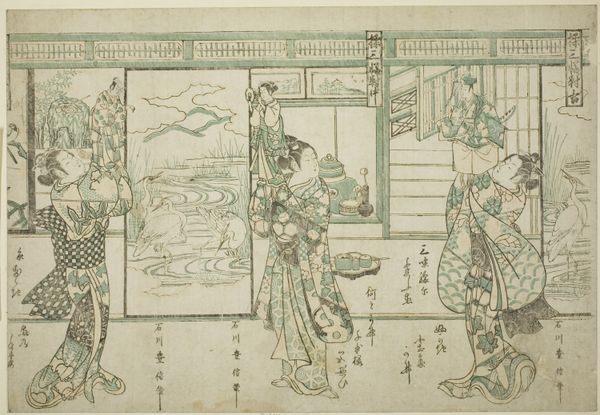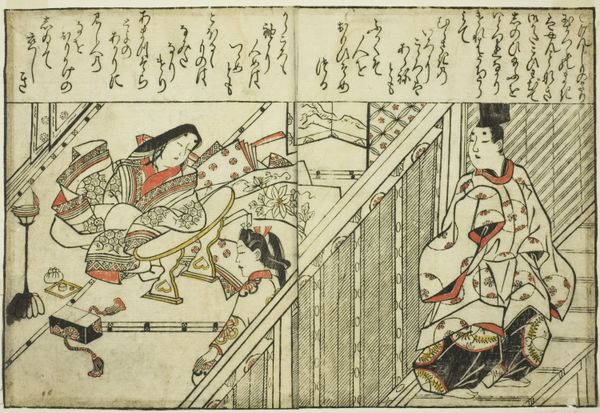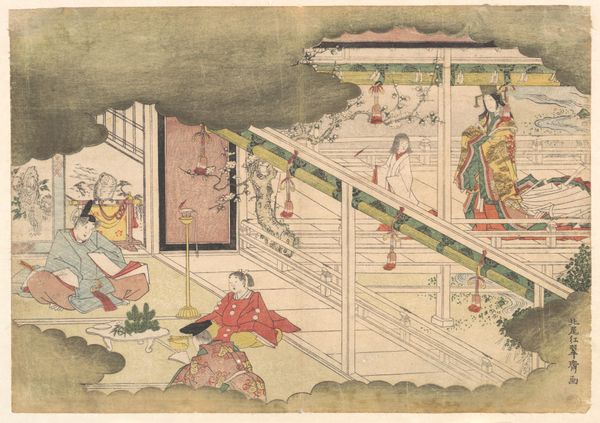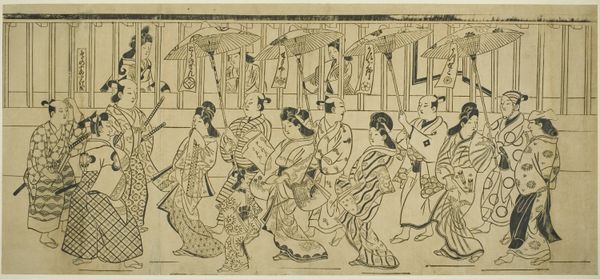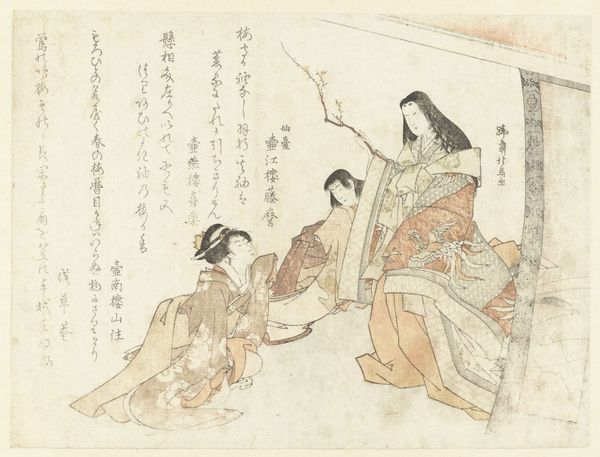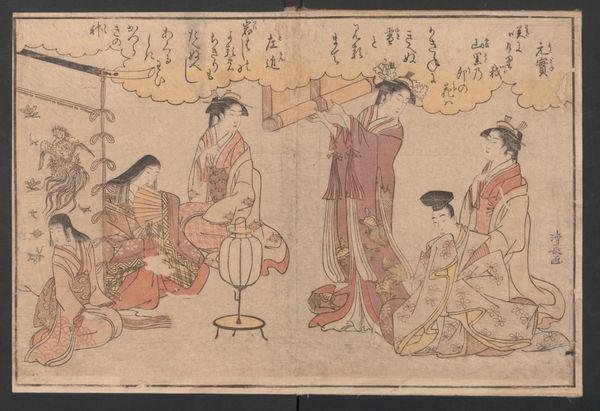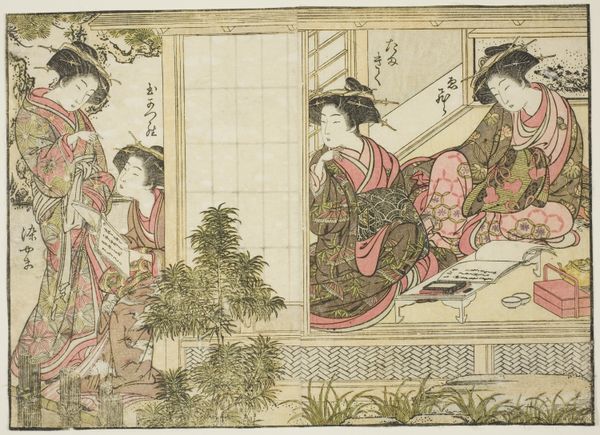
Shintokumaru Dancing before Oto Hime, from the illustrated book "Collection of Pictures of Beauties (Bijin e-zukushi)" c. 1683
0:00
0:00
drawing, print, ink
#
drawing
# print
#
asian-art
#
ukiyo-e
#
ink
#
genre-painting
Dimensions: 24.1 × 33.3 cm (9 1/2 × 13 1/8 in.)
Copyright: Public Domain
Curator: I'm struck by the way the artist, Hishikawa Moronobu, captures such a theatrical moment. This ink drawing, a print from around 1683, is titled "Shintokumaru Dancing before Oto Hime," pulled from his illustrated book, "Collection of Pictures of Beauties." Editor: There's a distinct feeling of courtly entertainment to it, a sense of watching a play unfold. The stylized figures almost float in their delineated space. Is that deliberate theatricality part of the broader tradition of Ukiyo-e? Curator: Absolutely. Ukiyo-e, meaning "pictures of the floating world," focused on ephemeral pleasures – courtesans, actors, entertainment. Moronobu was pivotal in establishing its distinct style, and that connection to theater, particularly the Kabuki tradition, is critical. Editor: It’s interesting you say that because the figure dancing holds a fan and pauses mid-gesture in such a suggestive way. He seems like the only one in the scene actually 'present.' But what about Oto Hime? Who is she in relation to the dancer, Shintokumaru? Curator: That's where it becomes interesting. Oto Hime is, in this case, positioned as the object of his performance, literally seated above as part of her court. By situating her in this way, it calls back to an old theatrical canon featuring these types of roles. This specific setup likely held a different charge in its original cultural context. Editor: The symbols around Oto Hime -- are those some kind of celestial emblems on the brocade before her? They seem intentionally arranged, almost iconic in their placement. Curator: Indeed, they echo a higher sphere of symbolic order befitting of her elevated status within the space depicted here. You’re right to consider their intent because they seem to be operating under very calculated motifs. As such, the tension lies not only in the exchange between figures but the symbolic context that they both uphold and defy at the same time. Editor: It is like a tapestry of symbols carefully arranged. It makes me think about the narratives and cultural performances it would have activated at the time. Thank you for revealing this for me. Curator: And thank you for seeing the intricacies within! Thinking about Ukiyo-e as carefully mediated social commentary certainly enriches our reading of works like these.
Comments
No comments
Be the first to comment and join the conversation on the ultimate creative platform.
